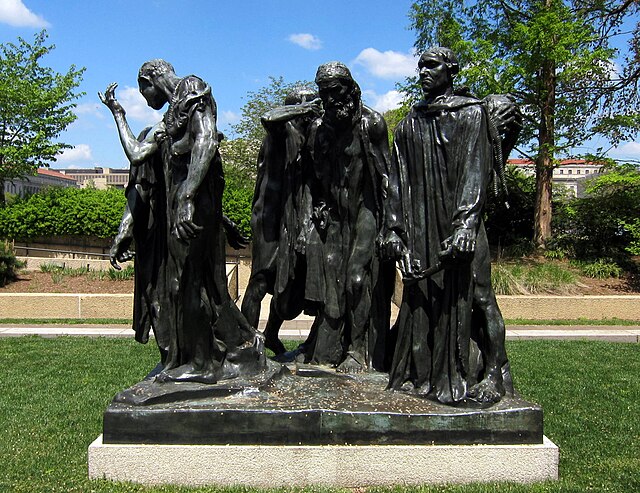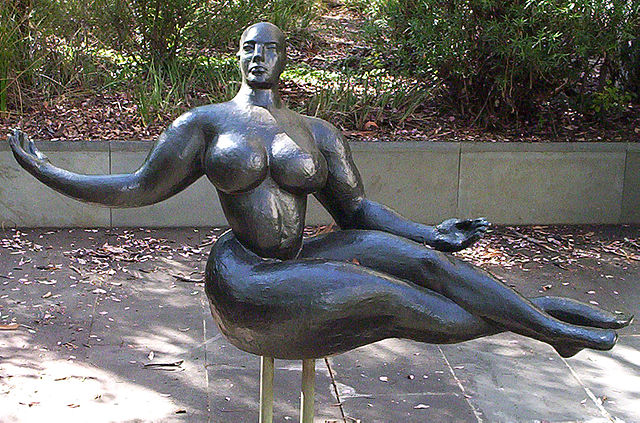Modern sculpture is generally considered to have begun with the work of Auguste Rodin, who is seen as the progenitor of modern sculpture. While Rodin did not set out to rebel against the past, he created a new way of building his works. He "dissolved the hard outline of contemporary Neo-Greek academicism, and thereby created a vital synthesis of opacity and transparency, volume and void". Along with a few other artists in the late 19th century who experimented with new artistic visions in sculpture like Edgar Degas and Paul Gauguin, Rodin invented a radical new approach in the creation of sculpture. Modern sculpture, along with all modern art, "arose as part of Western society's attempt to come to terms with the urban, industrial and secular society that emerged during the nineteenth century".
Auguste Rodin, The Burghers of Calais, 1889, Hirshhorn Museum and Sculpture Garden, Washington, D.C., cast 1943.
Gaston Lachaise, Floating Figure 1927, bronze, no. 5 from an edition of 7, National Gallery of Australia
Henry Moore, Double Oval (1966), Henry Moore Foundation
David Smith, CUBI VI (1963) at the Israel Museum in Jerusalem
Cubist sculpture developed in parallel with Cubist painting, beginning in Paris around 1909 with its proto-Cubist phase, and evolving through the early 1920s. Just as Cubist painting, Cubist sculpture is rooted in Paul Cézanne's reduction of painted objects into component planes and geometric solids; cubes, spheres, cylinders, and cones. Presenting fragments and facets of objects that could be visually interpreted in different ways had the effect of 'revealing the structure' of the object. Cubist sculpture essentially is the dynamic rendering of three-dimensional objects in the language of non-Euclidean geometry by shifting viewpoints of volume or mass in terms of spherical, flat and hyperbolic surfaces.
Alexander Archipenko, 1912, La Vie Familiale (Family Life). Exhibited at the 1912 Salon d'Automne, Paris and the 1913 Armory Show in New York, Chicago and Boston. The original sculpture (approx six feet tall) was accidentally destroyed.
Joseph Csaky, 1911-1912, Groupe de femmes (Groupe de trois femmes, Groupe de trois personnages), plaster lost, Exhibited at the 1912 Salon d'Automne and Salon des Indépendants, 1913, Paris
Pablo Picasso, 1909–10, Head of a Woman (Fernande), modeled on Fernande Olivier
Albert Gleizes, 1912, Paysage près de paris, (Paysage de Courbevoie, Landschaft bei Paris), oil on canvas, 72.8 x 87.1 cm, missing from Hannover Germany since 1937








